In Article 16 of the UN Declaration of Human Rights: it is states that, “Men and women of full age, without any limitation due to race, nationality or religion, have the right to marry and to found a family. They are entitled to equal rights as to marriage, during marriage and at its dissolution." It also states that, "Marriage shall be entered into only with the free and full consent of the intending spouses.” Being forced into marriage, especially at a young age, is a human rights violation.
Here are the facts: Every year an estimated 15 million girls get married under the age of 18, some girls as young as eight. (1) The key contributors emerge as poverty, cultural tradition, and low societal value of women. (2) Effects of entering into child marriage span from reduced school attainment, increased likelihood of maternal/child death, increased social isolation, higher rates of domestic violence, higher rates of STDs, to overall lack of agency and bidding power within the relationship in making decisions. These are the struggles millions of young girls are facing everyday.
The goal is clear: for women to have the agency and autonomy to make decisions based on her own choices and abilities, and thus to be and feel empowered. We believe it is a woman’s right to consent to marriage and childbearing. To simply decide if, when, and to whom she will marry, and if, when, and to whom she will have children. We especially believe in the power of knowledge and information. For this campaign we promote the implementation of education regarding sexual/reproductive health, along with saving/investing methods. These two areas have proven to be key in allowing girls to take control over both their bodies and lives.

#Save(Her)Childhood

Child, Early and Forced Marriage
What if it was happening here?
Child Marriage Around the World
Main Causes
Poverty:
In low-income families, girls are often considered an economic burden. Rather than take care of their daughter until they reach adulthood, many low-income families find it easier to pay a dowry and marry their daughters off. Often seen as the least valuable member of the family, many adolescent girls are invested in the least. In the context of poverty, marriage becomes the only option for many girls as their own families are either incapable or unwilling to support them! (10)
Tradition and Culture:
In some cultures, a family's honor and a girl's virginity are closely tied together. Consequently, by making sure their daughter is married early, the family ensures that she will stay a virgin and thus uphold the family's reputation. In this context, marriage is believed to safegaurd young girls from sex outside of marriage, in other words, immoral behavior.
Gender Inequality
In many countries, women are very far from having the same rights as men, and this translated both culturally and legally. For example, in countries upholding Sharia Law, or traditional, islamic moral code, girls are permitted to get married upon reaching puberty. (2) While girls must formally agree to marriage, silence is often viewed as a "yes." In extreme cases, girls coming from conservative, traditional contexts are considered the property of their father until they are married. Marriage becomes akin to a business transaction between father and husband, where the daughter is but the property being negotiated in the deal. This means that a man has complete control over a woman's actions and choices, particularly who she marries. (2)(10)
Failure to Enforce Laws
Despite there being laws in most countries to prevent people from marrying under the age of 18, this does not stop some families. In countries where child marriage is prevalent, particularly in rural and poor areas, there is no real enforcement of the law. When there is enforcement, many families find ways to go around it. This is either done by creating falsified identity cards, or simply by going to areas where the laws are not enforced properly. (11)
SOcial Consequences
Reduced School Attainement
Reduced school attainement acts as both the cause and effect of girls in child marriage.
On one hand, we see girls drop out of school before they are married. Parents often do not see the value in their daughters, stop investing in them, and stop paying their school fees. Unable to go to school, these girls see marriage as an alternative entry to adulthood. (7)
On the other hand, we see reduced school attainment as an effect. Girls who enter marriage at a young age are associated with higher rates of dropping out. This is usually because they begin having children once they become married. Many schools do not allow students to attend if they are pregnant, and so, many girls must drop-out. (3)(7)
In some cases, schools will not allow girls to attend even if they are married. Girls who enter into marriage must shift their focus into the domain of the upkeeping of their household. Once a girl stops attending school and enters into marriage, her ability to earn wages decreases, leaving her wholly dependent on her husband, and diminishes her agency within the household in general.
For the girls who are married and continue to attend school, many suffer from social stigma consequently diminishing the effectiveness.(4)
Increased Social Isolation
In many cases, when young girls marry, they are cut from their previous familial and social networks. Pushed into the new and unfamiliar world of their husbands and his family, a strong feeling of powerlessness and isolation emerges. More specifically, isolation can have both negative psychological and physical effects on girls. Seeing that many girls are stripped of their previous supportive networks, social isolation makes girls more vulnerable to abuse and mistreated by their husband or his family. Social isolation becomes a hurdle when finding solutions within the topic of Child Marriage as these girls are often the hardest to reach. (2)
Domestic Violence
Many child brides marry men who are significantly older than them. The large age gap between a child bride and her spouse makes her more vulnerable to domestic abuse, nonconsensual sex, and isolation. Even those girls with the option of divorcing their abusive spouses are disempowered because (as we have learned) they have little education, reduced agency in the household, little spending power, and overall dependence on their husband.
And for girls with abusive husbands who already have children, divorce is out of the question. Girls who have children find themselves in a position where it is impossible to raise and support a family on their own. These girls usually lack the basic skills to find employment, and thus cannot provide resources to their children independently. And so, many girls are left trapped in abusive marriages, without any other options.
Health consequences
HIV/AIDS and other STDs
While risk of spreading STDs within marriage has often been ignored (seeing that marriage is usually a "closed" union between two people), it turns out that exposure to HIV/AIDS is a huge problem for young girls in marriages, especially in sub-Saharan Africa. (7) Usually marrying much older men, these girls are engaging in sex with a partner, that due to their age and past experiences, is more likely to have contracted STDs before marrying their wife. Seeing that girls are more frequently engaged in intercourse, use little or no condoms, and have little bidding power in abstaining from sex within the marriage, they find themselves seriously at risk for contracting STDs.(5)
High Rates of Maternal Morbidity and Mortality
In many countries girls are allowed to marry upon reaching their first period, as it is a symbol of womanhood. The truth of the matter is that most girls' bodies are not fully developed to safely carry a child to term and give birth at such young ages. According to stats given at the 2014 UN Summit, "complications related to pregnancy and childbirth are the leading cause of death for girls aged 15-19 in the developing world."(4) Usually in rural areas where traditional midwives are used, many girls do not have access to adequate health care professionals who can perform c-sections if they need one. It is often the case that a girl needs a c-section as her body is still undeveloped, and her hips are too small to perform the birth naturally. In more conservative regions and extreme stories, husbands will not allow for male healthcare professionals to touch or see their wife's body to perform life-saving procedures, and so many girls and their children are dying this way. We see that cultural and traditional norms are tightly woven into this discussion.
Sexual and Reproductive Education
Girls entering marriage at a young age frequently do not have adequete information regarding their basic reproductive health, and additionally, sexual health. As a result, most girls do not know they have the ability to space out their pregnancies, use contraception, or protect themselves against STDs with their partner.
The Facts:
-
"Girls Summit 2014." Girls Summit Pledge. N.p., 2014. Web.
-
"Child Marriage." Council on Foreign Relations. Web. 8 Nov. 2014. <http://cfr.org>
-
"Child, Early and Forced Marriage - Informal Panel Discussion." UN Live United Nations Web TV. United Nations, 4 Sept. 2014. Web.
-
Ashe, John W. Panel Discussion - Child, Early and Forced Marriage Worldwide, including the Elaboration of the Post- 2015 Development Agenda (n.d.): n. pag. United Nations, 6 Aug. 2014. Web.
-
"Child Marriages: 39 000 Every Day." WHO. World Health Organization, 2014. Web.
-
Preventing and Eliminating Child, Early, and Forced Marriage- Report of the Office of the United Nations High Commissioner for Human Rights. Working paper no. 1412876. N.p.: United Nations, 2014. Print.
-
"Expert Consultation from Professor Shelley Clark regarding CEFM." Live Interview. 16 Oct. 2014.
-
GREENE, MARGARET E. "Ending Child Marriage- What Research Is Needed?" Ending Child Marriage in a Generation (2014): n. pag. Ford Foundation. Web.
-
"Child Marriage Resources and Statistics." CARE. N.p., 2014. Web
-
"Drive to End Child Marriage, Dowry." KathMandU Post. N.p., 11 Oct. 2014. Web.
-
"Child Marriage & The Law - Girls Not Brides." Girls Not Brides Child Marriage The Law Comments. N.p., n.d. Web. 13 Nov. 2014.
Citations:
Solutions
Latest reccomendations from the UN Report, Human Rights Council, April 2014 urges countries to: (6)
-
Create national and local level policies and strategies to combat CEFM.
-
Ensure national legal framework is in line with international human rights standards, paying special attention to:
-
Appropriate age of Majority.
-
Appropriate legal age for marriage for girls and boys.
-
The overall prohibition of forced marriage.
-
Enforcement of birth and marriage registration
-
-
Remove legal obstacles for those who seek the enforcement of national laws on child marriage
-
Provide resources for girls who leave a marriage
-
Promote women's economic empowerment and access to productive resources
-
Discuss the benefits of delaying marriage and ensuring that girls receive education with communities and families
Changing a country's laws, or a region's cultural norms in a day, a year, even a generation, is not a simple task. But, if knowledge can be funneled to young girls both in and out of marriage, it can prove to be both empowering and the key to end the cycle of child marriage often passed down from mother to daughter.
Education
Education is an incredibly powerful tool that helps individuals gain skills and knowledge to help them prosper and grow into their futures. In the UN Report from the Human Rights Council it states that the promotion of, "girls’ access to high-quality education, in accordance with relevant international standards, including tailored reintegration programmes for girls who are forced to drop out of school owing to marriage and/or childbirth; the provision of economic support and incentives to girls attending schools and to their families has proven to be effective in allowing girls to pursue higher education and delay marriage." (6) Vocational and life skills attained through education gives women the knowledge that will allow them to "lift themselves, their children and their families out of poverty." (4) Education helps individuals in forging paths to autonomy, where they can make incomes, and also make informed decisions. Lack of education is a huge obstacle that perpetuates poverty, and for young women who drop out of school, they find themselves in a critical disadvantage in the prospects of escaping from it.
What Education is needed? To whom? What age?
According to the UN Report, "providing age-appropriate, culturally relevant and empirically based comprehensive education on sexuality, sexual and reproductive health, gender equality and life-skills training for women and girls, and ensuring that women and girls are made aware of and have the capacity to claim and exercise their rights in relation to marriage." (6)
Educuation in sexual and reproductive health
-
Knowledge in the domain of sexual and reproductive health allows girls to take control over their bodies. (7)
Education in saving and investing
-
Knowledge in saving and investing practices allows girls to gain productive skills in managing their livlihoods. (7)
The persistence of child marriage throughout the world today has severely hindered the implementation of the Millenium Development goals. Poverty, universal primary education, gender equality, child mortality, maternal health, and high rates of STD's are all issues present within child, early, and forced marriage. The strong, even undeniable correlations between child marriage and other development issues demonstrates the importance of going to the source. By focusing on finding a solution to end child marriage, there will be positive, cascading effects into other sectos of society. (4)
Early marriages often impact girl’s access to health services, education, and overall participation in decision-making. We see that girls who marry early are often the ones to drop out of school first, either from social stigma, inability to inscribe in school, or inability to balance house chores with schoolwork.
"Silence does not mean yes."
Early Marriage
Definition:
"refers to marriage involving a person aged below 18 in countries where the age of majority is attained earlier or upon marriage. Early marriage can also refer to marriages where both spouses are 18 or older but other factors make them unready to consent to marriage, such as their level of physical, emotional, sexual and psychosocial development, or lack of information regarding the person’s life options.” (3)
What is the difference between early, forced, and child marriage?
Women and young girls who are forced into marriage, enter into a relationship that is akin to slavery, where they often exercise little or no agency in their own lives and family life in general. It is in forced marriages where we see an increase in psychological and sexual violence. In Article 4 of the UN Declaration of Human Rights it is states, “No one shall be held in slavery or servitude; slavery and the slave trade shall be prohibited in all their forms.”
"Living like a Slave"
Forced Marriage
Defintion:
"any marriage which occurs without the full and free consent of one or both of the parties and/or where one or both of the parties is/are unable to end or leave the marriage, including or as a result of duress or intense social or family pressure.” (3)
Young girls who marry under the age of 18, or before an age of physical maturation, are considered child brides and wives. These girls must assume responsibilities and roles that most are not ready for both psychologically and physically. More specifically, child brides have a higher likelihood of bearing children themselves at a young age in which their bodies are not prepared. Child brides are at the highest risk of facing maternal death and injuries due to sexual activities and birth.
"Save Childhood"
Child Marriage
Definition:
"is a marriage in which at least one of the parties is a child. According to the Convention on the Rights of the Child, a child is “every human below the age of 18 years unless the law applicable to the child, majority is attained earlier.” (3)
1
2
Save(Her)Childhood Campaign

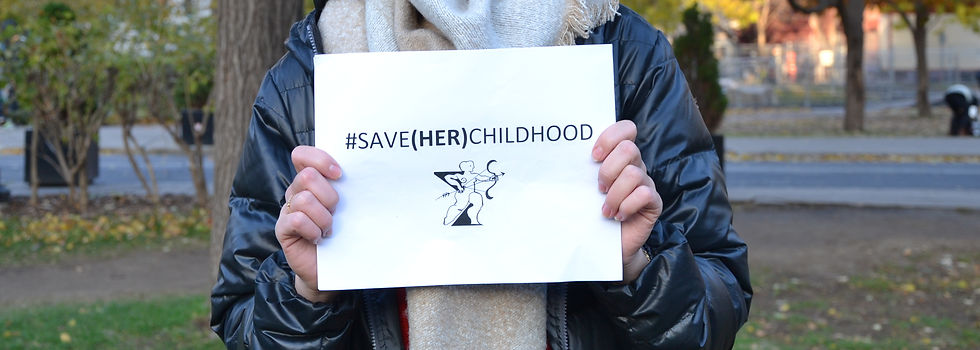
#SAVE(HER)CHILDHOOD is the Artemisia Project's first campaign. With the help of the McGill Community, we made a video that we hope will raise awareness on child, forced and early marriage.

Always focusing on childhood for this campaign, Artemisia aims to show that a girl's childhood can be experienced very differently around the world. Things need to change!

We have created a specific sticker for this campaign and hidden some in the streets of Montreal. If you find one, take a picture and share it with us!

This was a provocative piece that kicked-off our campaign. We hoped that the shock followers would experience with Diana’s wedding announcement would prompt them to learn more about the issue, as @artsydiana revealed her true identity tweeting “#save(her)childhood @artemisiavoice,” leading them to the Artemisia Project.
Child marriage occurs around the world, with South Asia and Central Africa as the regions with the highest rates. In these regions, especially in rural areas," an estimated one in three girls is married before turning eighteen, and one in nine before fifteen." If these rates continue, experts expect that 142 million girls will marry before adulthood within this decade. (2)
Cultural norms, poverty, and overall low value placed on girls emerge as the root causes that perpetuate high rates of child marriage in these regions.
The 10 countries with the highest rates of child marriage are:
-
Niger, 75%;
-
Chad and Central African Republic, 68%;
-
Bangladesh, 66%;
-
Guinea, 63%;
-
Mozambique, 56%;
-
Mali, 55%;
-
Burkina Faso and South Sudan, 52%;
-
Malawi, 50%. (5)
3
The Big Players
"Child marriage is a social menace. It's a socioeconomic problem."
-MAMATA BANERJEE, CHIEF MINISTER OF WEST BENGAL, INDIA
"Young girls who marry later and delay pregnancy beyond their adolescence have more chances to stay
healthier, to better their education and build a better life for themselves and their families.”
-FLAVIA BUSTREO, M.D., Assistant Director-General for Family, Women’s and Children’s Health at the World Health Organization.
“Girls who complete secondary school are six times less likely to become child brides.”
#stealthesestats CARE
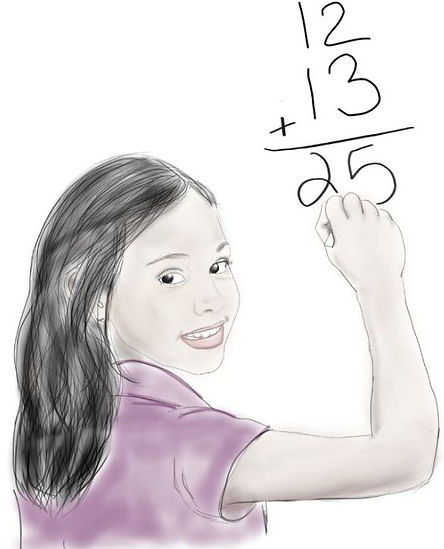

Meet the Problem Solver:
Jaag Welfare Movement
Project to Empower Child Brides in Pakistan
4
Interview with Abdul Rub Farooqi:
Executive Director of Jaag Welfare Movement
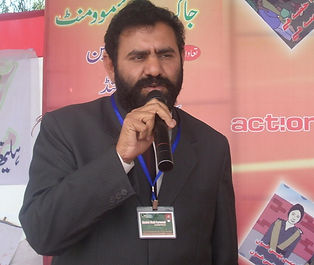
Can you present yourself in a few sentences?
My name is Abdul Rub Farooqi and I am the Executive Director in Jaag Welfare Movement since 2004, but my colleagues and I founded the organization in 1997. I started my profession in Information Technology in 1990. I have been involved in co-curricular activities from school life which lead me to form a Pakistan Youth Welfare Organization in 1985 (when I passed Secondary School Certificate). PYWO has created free coaching centers for poor students and conducted two exhibitions for antiques, paintings, coins, handicrafts etc. in order to mobilize youth in positive activities.
Basically I am Human Rights activist and gender sensitive. My mission is to devote myself to my organization which aims for the sustainable development of Children, Women and Older People. I am a 46 years old man and I graduated with a University degree in Sociology.
Can you tell us about Jaag Welfare Movement?
Jaag Welfare Movement is Human Rights based organization working on a non-profit basis. We have a clear vision, mission and objectif: to help the development of neglected and marginalized communities of Pakistan, especially southern Punjab.
.
Why did the Jaag Welfare Movement choose to fight against child marriage in particular?
Jaag Welfare Movement has a track record of raising a voice against VAW (Violence Against Women). Child marriage (common in the area of Punjab) emerges as a relevant issue for us as more often than not it leads to VAW.
While many other organizations and media outlets have taken on this issue, one of the leading causes of Child Marriage continues to be cultural norms. Many religious people consider that once girls reach puberty, they become women... and therein lies the real challenge: changing the mentality.
How did you go about creating and organizing the most recent project to empower 100 child brides in Pakistan?
Since the year 2008, we have been working on this issue as part of our Developmental Agenda. However, after becoming a member of GirlsNotBrides (UK based International Network for working for Ending Child Marriage), we were asked to take action in Pakistan and particularly in Punjab Province. As a result, we created our project and have saved many children from being victims of early marriage.
Lastly, according to you, what do you think is the most effective way of stopping child marriage?
Legislation and Policy Development by the Government of Punjab (Pakistan) and social mobilization with the participation of young / child girls can be a way forward to end or minimize the events of child marriages.

Main activities
-
Baseline survey on child marriages especially their Health Education and economic concerns
-
Awareness raising of communities through sensitization sessions, workshops, Interactive theatre, Puppet Shows, promotional material, e-messages, girls festivals, broadcast messages on Cable TV & FM Radio etc.
-
Formation of SECM community groups comprising women and men especially students/youth at UC level and involve them to organize events, support to education and skill development activities
-
Capacity building of SECM groups through workshops on women rights, child marriage, Health Education and various other forms of violence against women and related UN mechanisms like CEDAW, CRC etc.
-
Sensitization sessions with government functionaries, religious/community leaders and linkage building of SECM groups with them to prevent incidents of child marriage.
-
Establishment of Vocational Centres in 10 Union Councils depending on the TNA basis under the SECM Groups and Older People Associations
-
Sensitize local & National media on women rights and engage them to highlight the incidents of violence against women and timely reporting on child marriage
-
Consultation meetings with legal experts, political parties, CBOs, CSOs to frame policy to emend Child Marriage Restraint Act 1929.
-
Lobby meetings with elected representatives to emend Child Marriage Restraint Act 1929.
Objectives
-
Organise community action to end child marriage and promote women’s social and economic empowerment in selected Union Councils of Rahim Yar Khan.
-
Mobilize and engage all stakeholders including SECM groups, communities, CSOs, media and parliamentarians to raise awareness against child marriages, help develop skills of victims, and review law governing child marriage

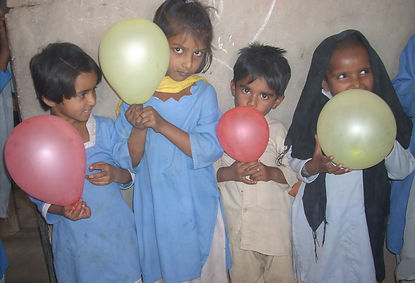
For Girls
-
Thousands of girls are increasingly aware of their rights
-
Girls have the opportunity to develop solidarity with one another through peer groups and collective action
-
Alternative economic, social roles for girls and women exist and are valued
-
Increased access of married and unmarried girls to health, education, economic, and legal support
Laws and Policies
-
National laws reflect international and regional human rights standards
-
Robust legal framework against child marriage in place that sets 18 as the minimum legal age for marriage and protects girls’ and women’s rights
-
Governments develop supportive policy frameworks with adequate resourcing across Ministries to increase educational, economic and social opportunities for girls at risk of child marriage and married girls
-
Strengthened civil registration systems for birth and marriage
-
Increased accountability and monitoring of national / regional / community institutions
For Families
-
Families, communities and young people are increasingly aware of the harmful impact of child marriage and alternatives available
-
Families, communities and young people value alternative options to child marriage
-
Families and communities prefer not to marry girls as children
-
Men prefer not to marry girls who are still children
-
Increased use of media to inform and support norm change to end child marriage
Services
-
Increased access to safe, quality formal and non-formal education for girls
-
Increased access to health services for adolescent girls, married and unmarried
-
Health and education services establish protocols on identifying the warning signs and addressing the risks of child marriage
-
Improved economic security for girls
-
Increased commitment of programs to prevent and mitigate risk of child marriage
Impact of the project


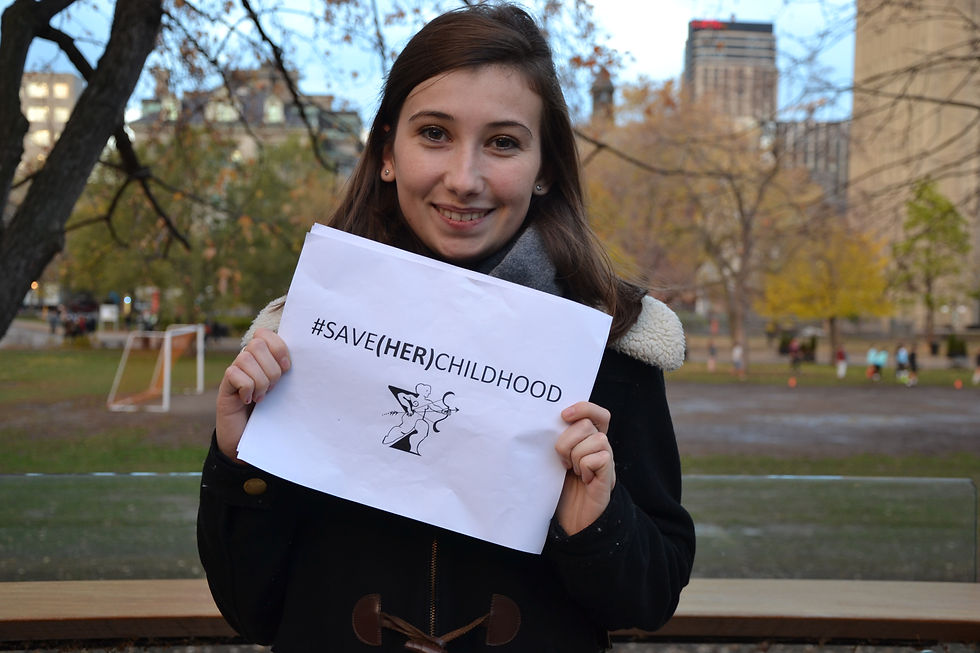
"I aspired to be an engineer."
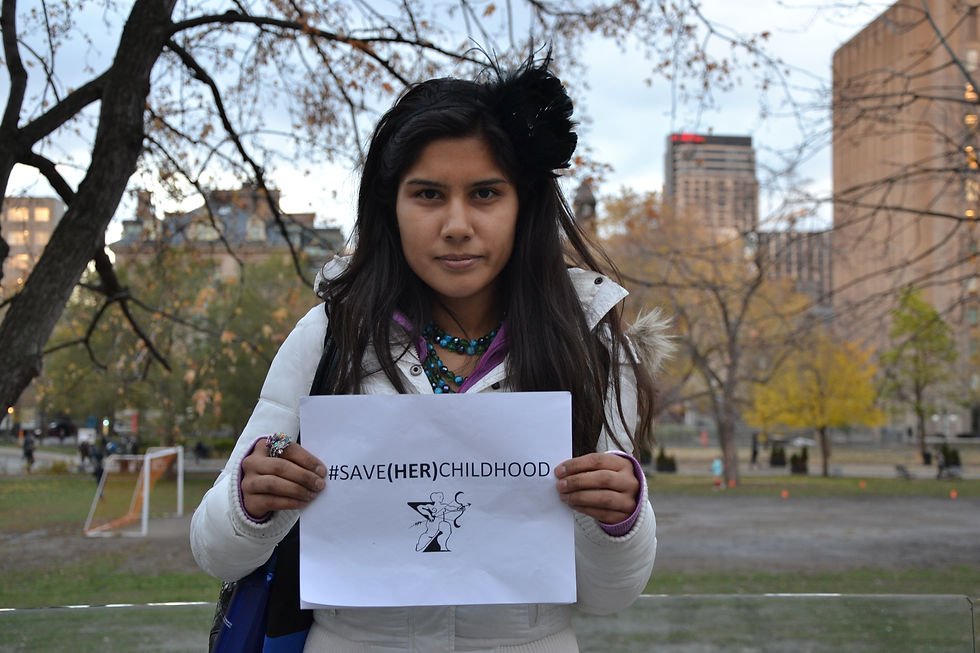
"Reading was probably my favorite pass time."
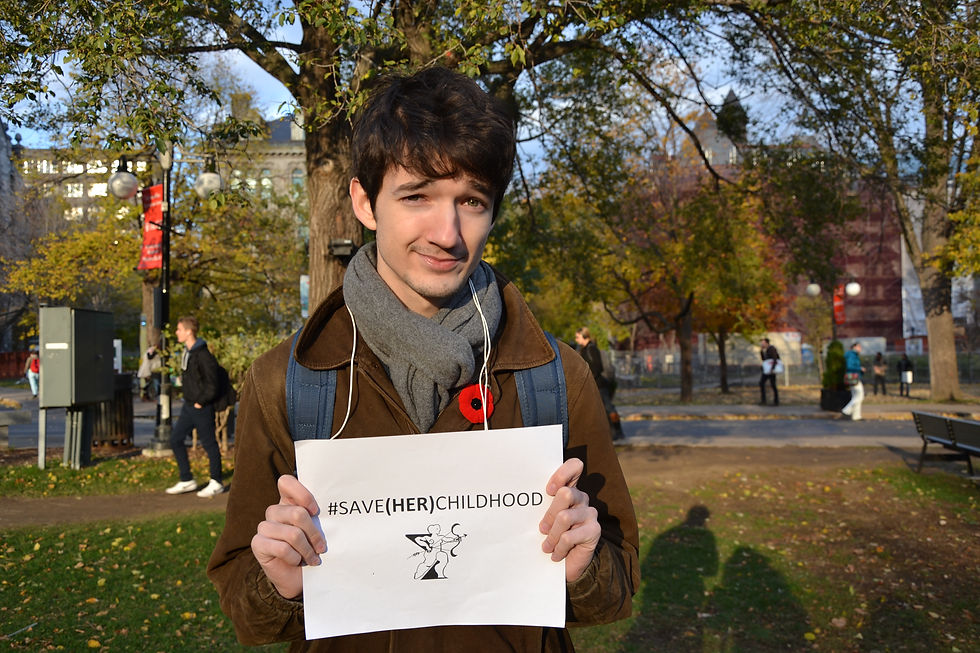
"I loved to read"

"I aspired to be an engineer."









